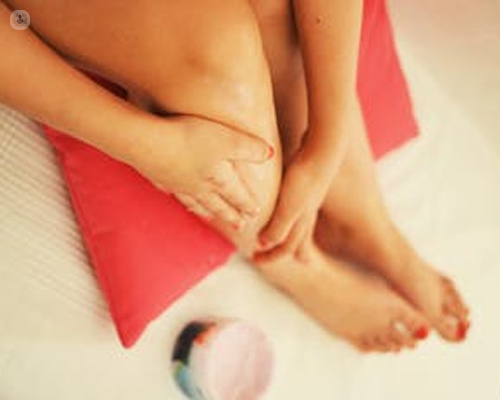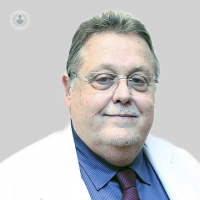Discomfort in the legs ?
Written by:Among the health problems that commonly affect the lower extremities are traumatic injuries and vascular diseases. The first ones refer to bone fractures, muscle tears, tendinitis, etc.. (problems that cause pain and inability to move normally) and the second have to do with poor blood circulation (which can generate, in addition to discomfort in the area, the appearance of ulcers, varicose veins and other more serious complications).
Circulation problems can cause ulcers and varicose veins in the legs, pain, night cramps and swelling in the ankles and feet.
Circulation problems
Feeling tired when walking, having nighttime pains and presenting vascular injuries such as ulcers in the legs or feet could indicate -according to Dr.. Carlos Lisbona Sabater, co-director of the Laser Varicose Surgery Unit of the Teknon Medical Center in Barcelona- the existence of a circulatory problem, such as arteriosclerosis.
Also the appearance of varicose veins, notice heaviness and tingling and experience pain and swelling in the ankles and feet (especially in summer and at the end of the day) would be the result of a circulatory problem and, therefore, it would be advisable to go to the doctor when they appeared. first symptoms. And, as explained by Dr. Lisbona, specialist in angiology and vascular surgery: "Varicose veins can be a source of severe complications, such as phlebitis, skin eczema, changes in skin color in the area above the ankles, ulcers and even venous thrombosis and pulmonary embolism (which can be fatal). For this reason, whenever we see varicose veins on the legs, ocher color on the ankles, we have some of the discomforts that we have mentioned or we have a family history of circulatory diseases, we must inform the doctor ".

Treat varicose veins ...
The appearance of varicose veins and spider veins does not always have an associated risk. However, the ideal is for a specialist to analyze our case and indicate if it is necessary to follow any treatment.
People who want to end these unsightly marks and recover healthy-looking legs can resort to surgery, solution, as Dr.. Lisbona, "fast, safe, definitive and effective. And if, in addition, a laser technique is used, the peculiarity is added that it is painless, of very fast recovery, totally aesthetic and, according to the cases, ambulatory ".
For healthy and resistant legs
1. Maintaining an adequate weight is essential to enjoy good health. Overweight and obesity are risk factors for many conditions and should be avoided .
2. Following a healthy and balanced diet, which provides the necessary nutrients, helps prevent many diseases, especially those that cause cardiovascular problems. Avoid excessive fat intake.
3. Exercise regularly improves our physical endurance, promotes circulation, strengthens bones and tones muscles. As a result, it helps prevent vascular conditions and injuries.
4. To prevent vascular problems in the legs, it is also important to avoid the use of very tight clothes, as well as to stay for long periods of time sitting.
The most frequent injuries
"The most typical lesions in the legs are those that affect the ligaments of the knee and the ankle. Fibrillary muscle tears in the calf and thigh, fractures of the tibia and fibula, injuries to the Achilles tendon and tendonitis follow frequently, "explains Dr.. Aleix Vidal, specialist in traumatology, orthopedic surgery and sports traumatology. He adds that, although it can not be generalized, since a traumatic injury can occur at any age, there is a special incidence of ligament injuries in the ankle during adolescence, while fractures of the tibia and fibula tend to be typical. of young adults. Lesions of the anterior cruciate ligament tend to occur between 30 and 45 years, especially in women, and ruptures of the Achilles tendon and muscle tears are often frequent in male adults.
Diet against injuries
Food plays an essential role in the health of bones, adds Dr.. Aleix Vidal: "Adequate calcium intake is essential for bone mineralization (therefore it is recommended to take the equivalent of two glasses of milk, either in the form of yogurt, cheese or butter) and a proper accumulation of calories to burn and produce energy in response to the demand of physical exercise (you have to eat protein - meat, fish, etc. - and carbohydrates - pasta, nuts, etc.-). Vitamins serve as a mediator for many metabolic functions. Vitamin D, for example, is essential for the transport and absorption of calcium. "



